Let’s face it–audiophiles, gamers, and streamers face a growing appetite for streaming audio quality. Of all the audio gear out there, audio interfaces and mixers are two pieces of audio tech we can’t do without. But when it comes to streaming, one always does it better than the other, depending on what you’re trying to accomplish.
Audio interfaces are better for streaming. They’re small and portable, contain multiple inputs and controls, and can be used on a digital audio workstation (DAW). But best of all, audio interfaces can process multiple inputs simultaneously, a feature that’s not so common with digital mixers.
In this article, I analyzed the most common questions you might have about audio interfaces and mixers, their differences, and the best option for streaming.
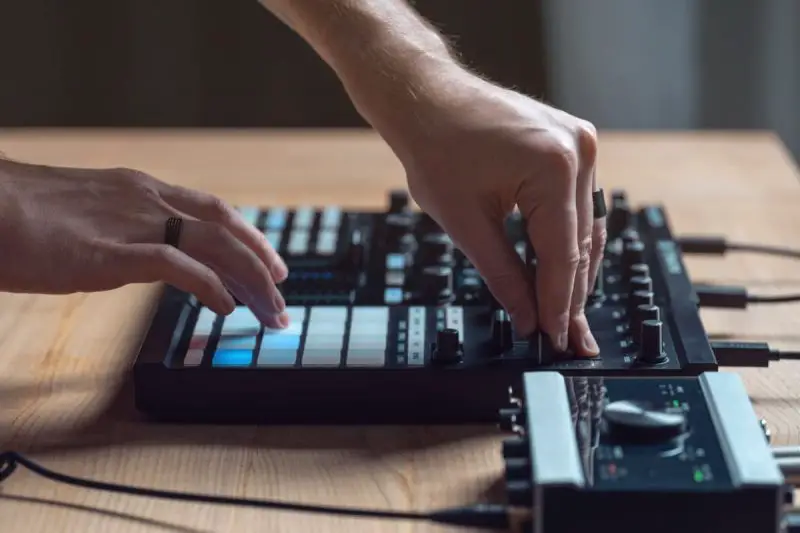
What Is an Audio Interface?
Anyone who records music regularly knows that getting accurate results can be difficult. Sure, you can plug in your guitar and amp and play away. But if you want to get serious about recording your tunes, your setup requires a few more tools.
An audio interface is an electrical device that can be connected to a computer in order to record and play sound. It allows the user to connect multiple instruments, microphones, and other sound sources. Audio interfaces are also used for live performance.
Your favorite band’s concert would probably be impossible without an audio interface summing up all the instruments and vocals and channeling them to other processors.
What Is a Mixer?
A mixer is a hardware unit that lets you combine two or more sound sources together. It provides control over each setting (EQ, reverb, echo, volume, gain, etc.), which is a big part of what makes it different from an audio interface.
Usually, mixers are essential pieces of any recording studio. They are used to create the final sound of a song.
Mixers have a role to play in home audio and streaming too. Most pro audio mixers have XLR inputs and outputs for connecting professional microphones and other audio equipment if you’re into professional music and gaming with live streaming.
A mixer can be used to combine several audio sources and produce a stereo track.
For example, you could plug in a microphone, keyboard, and guitar amp into a mixer.
With mixers, it’s easy to manipulate the EQ, volume, gain, and other settings and get a final clean output.
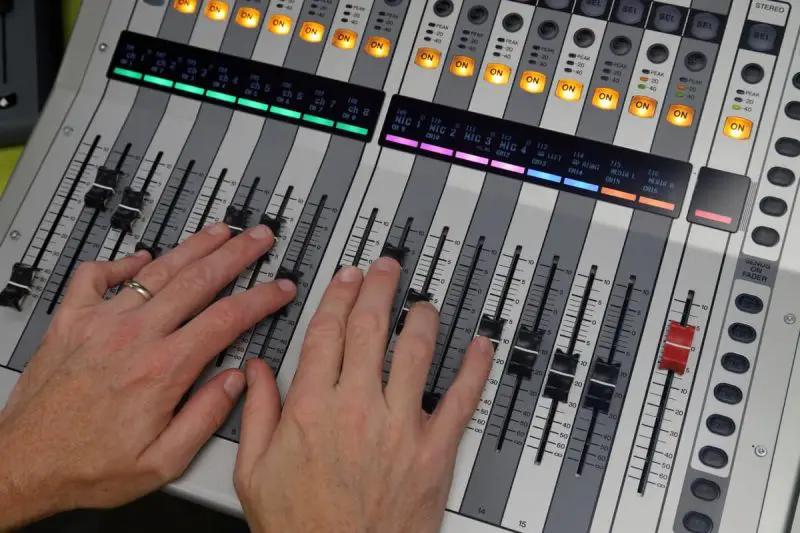
Audio Interface vs. Mixer: What’s the Difference?
Audio interfaces and mixers are used in audio production. Both devices can take in analog signals and spit out an analog output.
Both devices also have inputs for multiple sources, about 4-6 channels on average, although higher-end models contain 12-16 channels for various sources.
The difference between an audio interface and a mixer is that an audio interface comfortably works on a Digital Audio Workstation (DAWs), where it records multichannel sources simultaneously. On the other hand, mixers allow you to record one source at a time and combine the output on a stereo track.
Audio signals running through audio interfaces are first converted to digital to be processed in the computer, then sent in an analog format to the output (speakers or headphones).
With mixers, there’s no need to convert the signal to a digital format (especially if you’re not connecting to a PC or laptop).
The input signal is processed in the mixer – you can use the multiple controls to do this and stream the output to the audience.
Furthermore, some mixers may contain built-in audio interfaces, but this comes at a price.

Mixers like the XENYX Q802USB (available on Amazon.com) have a built-in audio interface and offer top-notch audio quality control for live performances and professional recording.
It can be difficult to know when to use one over the other, but the answer usually lies in your recording scenario. For example, if you are recording a band for their first album, you will most likely not need a professional mixer. In this case, you can use a microphone, an audio interface, and your computer’s built-in sound card to record your band’s tracks.
However, if you are making a more professional album and will be recording other musicians, you will need a mixer and an audio interface.
Read more: Audio Interface vs. Mixer: Which Is Right for You?
Do I Need an Audio Mixer for Streaming?
You’ve probably built a perfect live broadcast studio with the latest recording software, HD cameras, microphones, and a professional lighting setup. But you’re not quite done yet.
You need to connect all these devices with a sound system, so your viewers hear your broadcast as it was intended. After all, a broadcast is more than just the video; it’s also the audio mix.
One problem, though: will an audio mixer deliver what your audience needs?
You need an audio mixer for streaming if you use multiple audio inputs or plan on having a band or a couple of guests on your platform. However, if you do not have a complicated setup with just a mic and a few instruments, you probably don’t need a mixer.
This is not to say that you don’t need a mixer at all. In fact, there are several scenarios where you need mixers in your setup.
Mixers produce an already processed mix without the need to process the signal any further on your PC.
Secondly, audio mixers provide a broad set of controls right at your fingertips. Everything from reverb, echos, gain, bass controls, and EQs are right where you need them. That’s one of the most significant advantages of audio mixers for streaming.
On the flipside, audio mixers are not the best fit if you’re simply streaming games and other simpler tasks on a smaller scale.
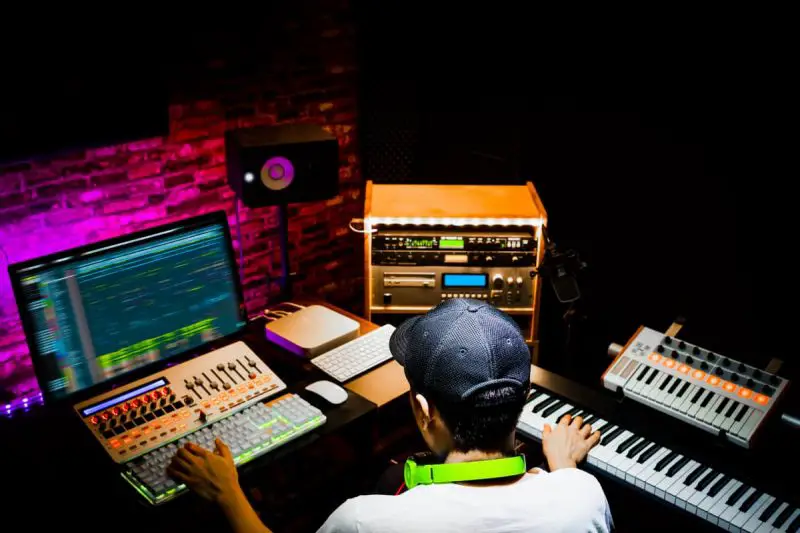
Is an Audio Interface Good for Streaming?
If you have any recording, mixing, and other audio production work when streaming, the answer isn’t farfetched. An audio interface offers many advantages over a computer’s internal sound card, including higher audio quality, reliability, and greater flexibility.
For example, an audio interface can provide a level of connectivity that a computer’s onboard sound card can’t: multiple inputs and outputs, as well as an array of connection types, including USB, XLR, and several other types of analog inputs.
Audio interfaces are good for streaming if you only need a few inputs. Besides supporting basic instruments, an audio interface can also help boost the sound gain and volume so your audience can hear you loud and clear.
The best audio interfaces work with a variety of different recording and mixing software on a computer. Many audio interfaces are also compatible with virtual audio workstations and other types of software that enable remote recording and mixing workflows.
All you have to do is hook them up to your computer via USB, and there you have it!
Many audio interfaces also have built-in mic preamps, which can be a gamechanger when streaming – literally. Mic preamps allow you to connect a microphone to your computer and control the volume of the mic’s output, which means you can adjust the volume of your voice as it comes into your computer.
Mic preamps are helpful if you have a noisy environment and need to reduce the background noise in your voice. They can also help you prevent popping and clipping (the loud, sudden noises that come out of nowhere when the volume of your voice is too high).
Do I Need Both Audio Interface and Mixer?
Audio mixers and interfaces are responsible for a recording or live broadcast. While most people look at them as separate devices, it is important to point out that they are, in a way, two sides of the same coin. A good quality audio interface or mixer can have an impact on whatever it is you are streaming.
You don’t need both an audio interface and an audio mixer working at the same time. You can use an audio interface for recording and streaming. A mixer can also do the same alone. However, it wouldn’t hurt to have both devices onboard your setup at the same time.
Audio mixers come in varieties: USB mixers or traditional stand alone mixers.
Traditional mixers cannot be directly connected to a PC or mobile phone app. Most traditional mixers don’t provide the much-desired USB connectivity to connect directly to a PC or mobile phone.
Read more: Analog vs. Digital Mixers: The Pros and Cons Explained
You might also consider getting a mixer to work with the extra inputs if you already have an audio interface.
You can also upgrade to a multi-input audio interface like the Scarlet 18i20 (available on Amazon.com) which has 18 inputs, and 20 outputs to cover all your instruments.
If you’re recording instruments like guitars, drums, or other acoustic instruments, you’ll need an interface to access more controls on your computer.
However, if you’re recording vocals, you may want to invest in a dedicated audio mixer. Professional mixers like the Seismic Audio mixer (available on Amazon.com) offer a variety of controls, like volume adjustments and equalization, that are essential for recording high-quality vocals.
Both mixers and interfaces complement each other, and having the two in your home studio would provide more options.
You can use them interchangeably. You can use the audio interface if you want to record each audio input as separate tracks. You can use a mixer if you want to blend the different audio inputs into a stereo mix.
Or you could simply connect the two and use them as a hybrid.
Read more: Can You Use a Mixer with an Audio Interface?
The following video shows you how to do this:
Should I Use a Mixer Before Audio Interface?
When deciding between an audio interface and an audio mixer, consider the particular needs of your recording setup.
As mentioned before, if you’re recording multiple acoustic instruments at the same time, you’ll need an interface. If you’re recording vocals, a mixer may be a better choice.
You should use a mixer before an audio interface if your goal is to get a stereo audio output by mixing two or more audio sources together. Later, you can hook up your audio interface to the setup and stream it on your PC.
Using the mixer before the audio interface gives you more control over the soundtrack. Not all recording requires a high-end studio.
You can record your own music at home with a simple computer, a microphone, and some songs you already have. But if you want to make it sound professional, you’ll need your mixer feeding your audio interface.
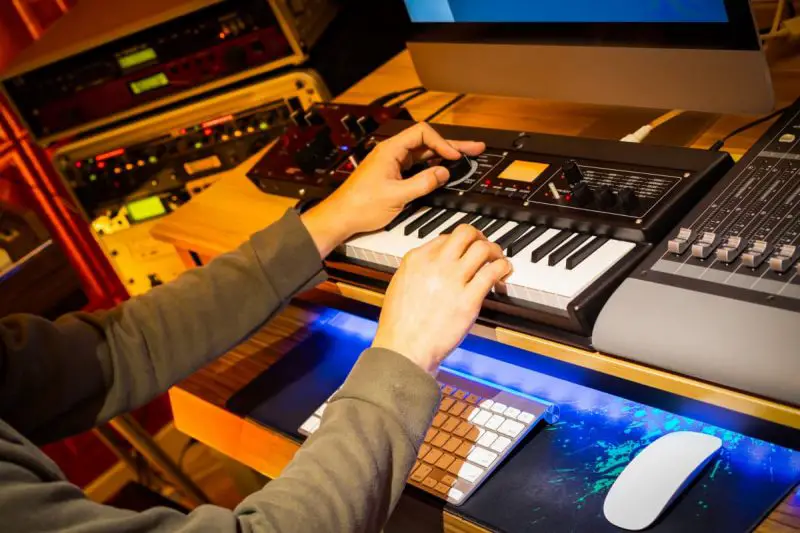
Audio Interface vs. Mixer for Live Streaming
Streaming live video is difficult for many reasons. It requires lots of bandwidth, so you’ll need a fast internet connection. And since audio is inherently laggy, every little stutter can make a difference.
But perhaps the biggest problem is digital audio. It’s tricky to get it right when streaming audio, especially if you want to avoid annoying latency and awkward moments of silence. There’s a lot that can go wrong and many different factors to consider.
Audio interfaces are the better option for live streaming, although this largely depends on your needs.
Mixers offer a hands-on control for all the mixing, but the sound quality may not match up to that of an audio interface.
You can easily get away with buying a decent audio interface for live streaming, but a mixer will provide you with a lot more options.
Audio interfaces are also more suitable for recordings, podcasts, Facebook Live, IGTV, and voiceovers.
On the downside, you may run into a few latency issues with your audio interface. While most audio interfaces have very low latency, you might want to look for one with the least latency when live streaming.
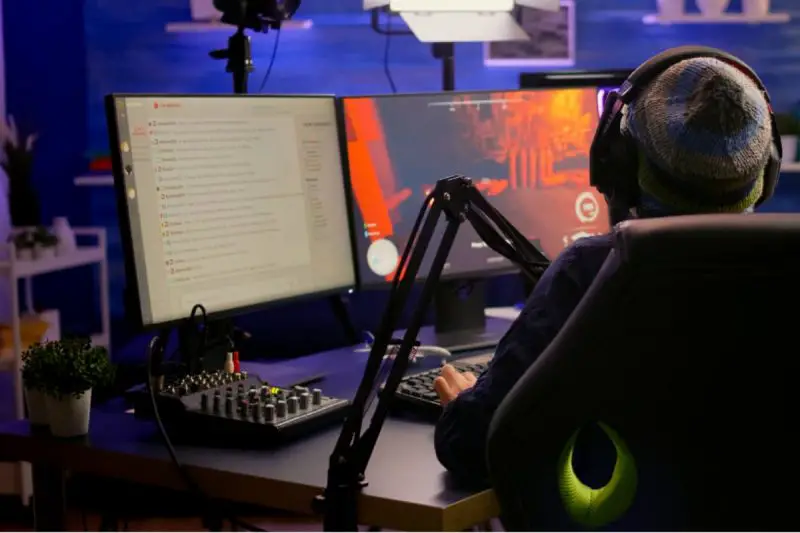
Final Thoughts
Choosing between an audio interface and mixer for your live stream will depend on your specific needs.
For example, if you’re just getting started with audio streaming or have a tighter budget, it might be worth reconsidering an audio interface.
But if you have a need for more inputs and outputs, or want to connect your computer to external sources, then a mixer would be the best option.
